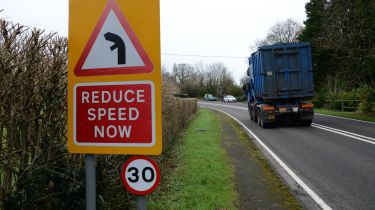Britain’s most dangerous roads revealed: 50 per cent of fatalities occur on 10 per cent of roads
Motoring organisations call for £75 million of Government investment to prevent 1,100 deaths over the next two decades

Half of road traffic fatalities occur on just 10 per cent of the British road network, it has been revealed.
A newly published list of the most dangerous roads in Britain shows there were 30,248 fatal and serious crashes on major roads last year, with an average of 73 casualties a day.
• Auto Express's ultimate guide to handling
Ageas Insurance and the Road Safety Foundation (RSF), which worked together to publish the data, claim traffic accidents cost society £35bn a year. The researchers consider Britain could have avoided 2,549 road deaths between 2010 and 2017 by keeping up with international targets.
The two organisations are calling for the Government to spend £75 million in order to prevent an estimated 1,100 deaths over the next two decades, followed by a further £75 million investment every five years thereafter.
This is in spite of £100 million already having been dedicated to preventing 1,450 casualties on the country’s most dangerous A-roads in the next 20 years.
Nonetheless, the report’s authors argue more needs to be done, partly because a typical single-carriageway A road is eight times more dangerous than a motorway.
The data identifies 40 persistently higher risk roads that had an average of one fatal or serious crash per mile along their length in the three years to 2016.
The top 10 most persistently high-risk roads last year were:
| Road | Section | Region |
| A254 | Between the junction with the A28 in Margate and the junction with the A255 near Ramsgate | South-East |
| A603 | Between junction 12 of the M11 and the junction with the A1134 and Newmarket Road | East of England |
| A5028 | Between the junction with Bedford Road and the junction with the A45 | East Midlands |
| A21 | Between the junction with the A2100 and the junction with the A259 at Hastings | South-East |
| A5028 – A551 | Between the junction with the A554 and the junction with the A553 | North-West |
| A1156 | Between the junction with the A14 and the junction with St Helens Street and Woodbridge Road | East of England |
| A259 | Between Whitehawk/Black Rock and the junction with the A26 | South-East |
| A6 | Between the junction with the A589 in Lancaster and junction 33 of the M6 | North-West |
| A32 | Between junction 10 of the M27 and the Delme Roundabout, and between the Quay Street Roundabout and the ferry terminal at Gosport | South-East |
| A548 | Between the junction with the A55 and the junction on the one-way system in Rhyl | Wales |
Of the top 10 list, four are in the South-East, which is also where the most persistently high-risk road – the A254 between Margate and Ramsgate in Kent – is located.
This section of road has worsened over the last three years, with an average of seven fatal and serious crashes each year. Almost half of these took place at junctions and a similar number involved pedestrians or cyclists.
Ageas Insurance CEO Andy Watson described the £35bn figure as “shocking”, adding: “that’s nearly two per cent of GDP and more than we spend on primary education and GP services combined”.
RSF director Suzy Charman called for continued Government investment, saying: “If we’re to achieve the shared international goal of zero road deaths by 2050, we need to tackle road casualty reduction with purpose and determination.”
Top tips for reading the road
Road improvements are fine in isolation, but combined with an alert driver, they can save lives. Driving consultant Martyn Poole talks us through how to use what we see on the roads and stay safe.
• “Beware of things like surface conditions. The number of road signs and levels of traffic should all send signals to drivers.”
• “Look at the vanishing point to judge a bend’s severity. If the radius decreases as you turn, the bend will be tighter. Seeing corners this way will prevent sharp braking.”
• “On a left-hand turn, you should drive as far to the right as legally possible to maximise your view.”
• “Consider also how close other cars are to you. It’s good practice to just brake once for hazards. Braking twice can easily cause a rear shunt with the car behind you.”
Have you got any dangerous roads where you live? Start a discussion in the comments below!
Find a car with the experts



